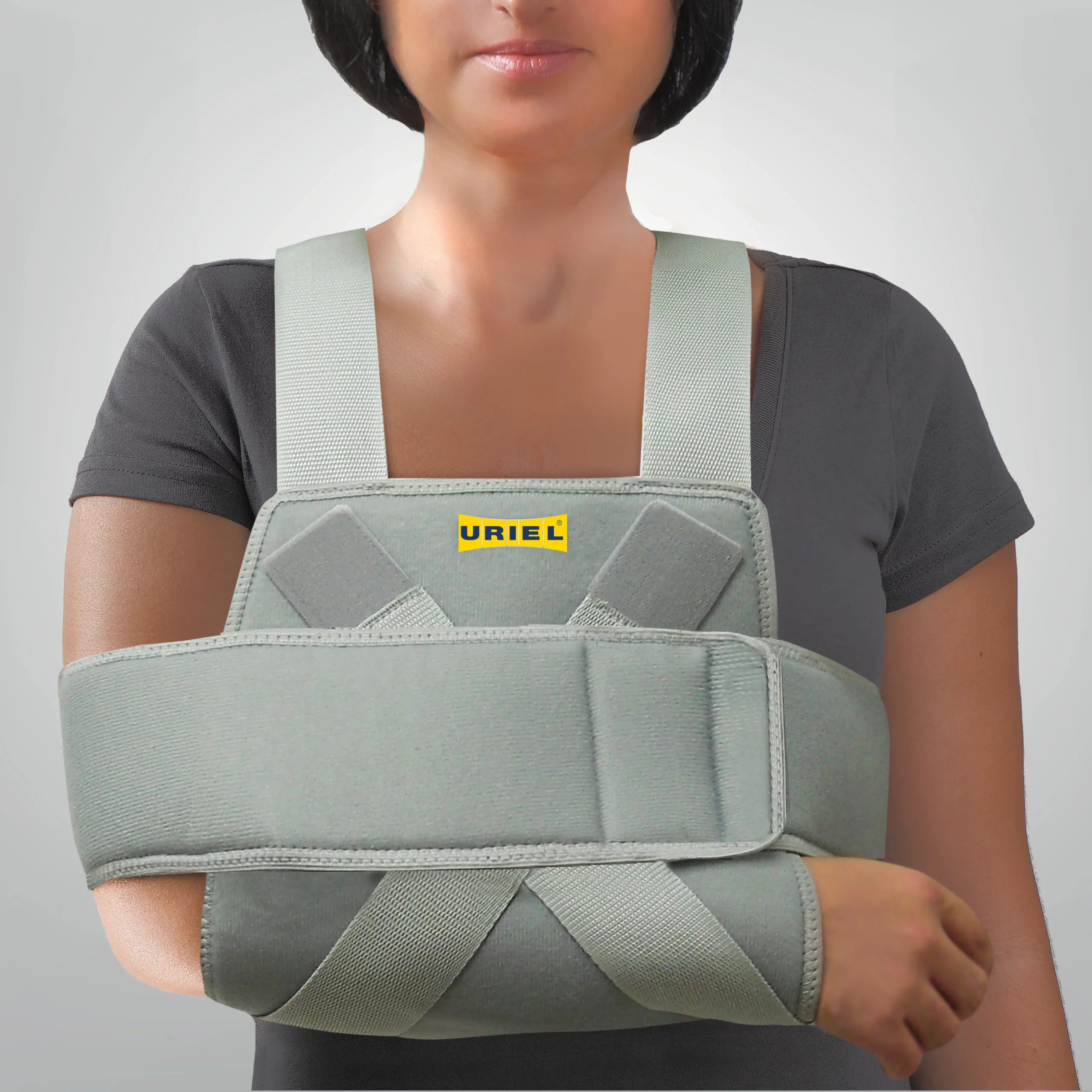
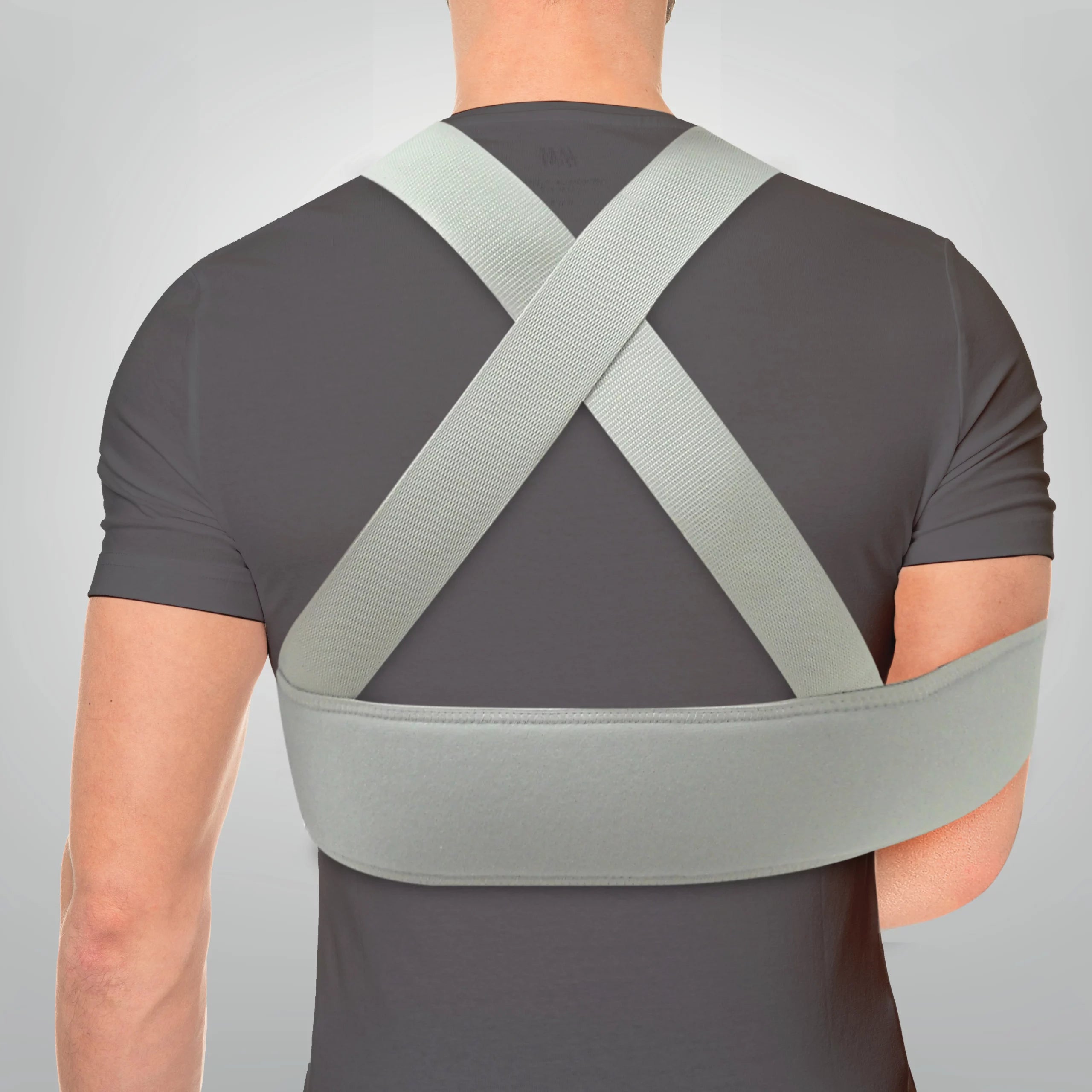
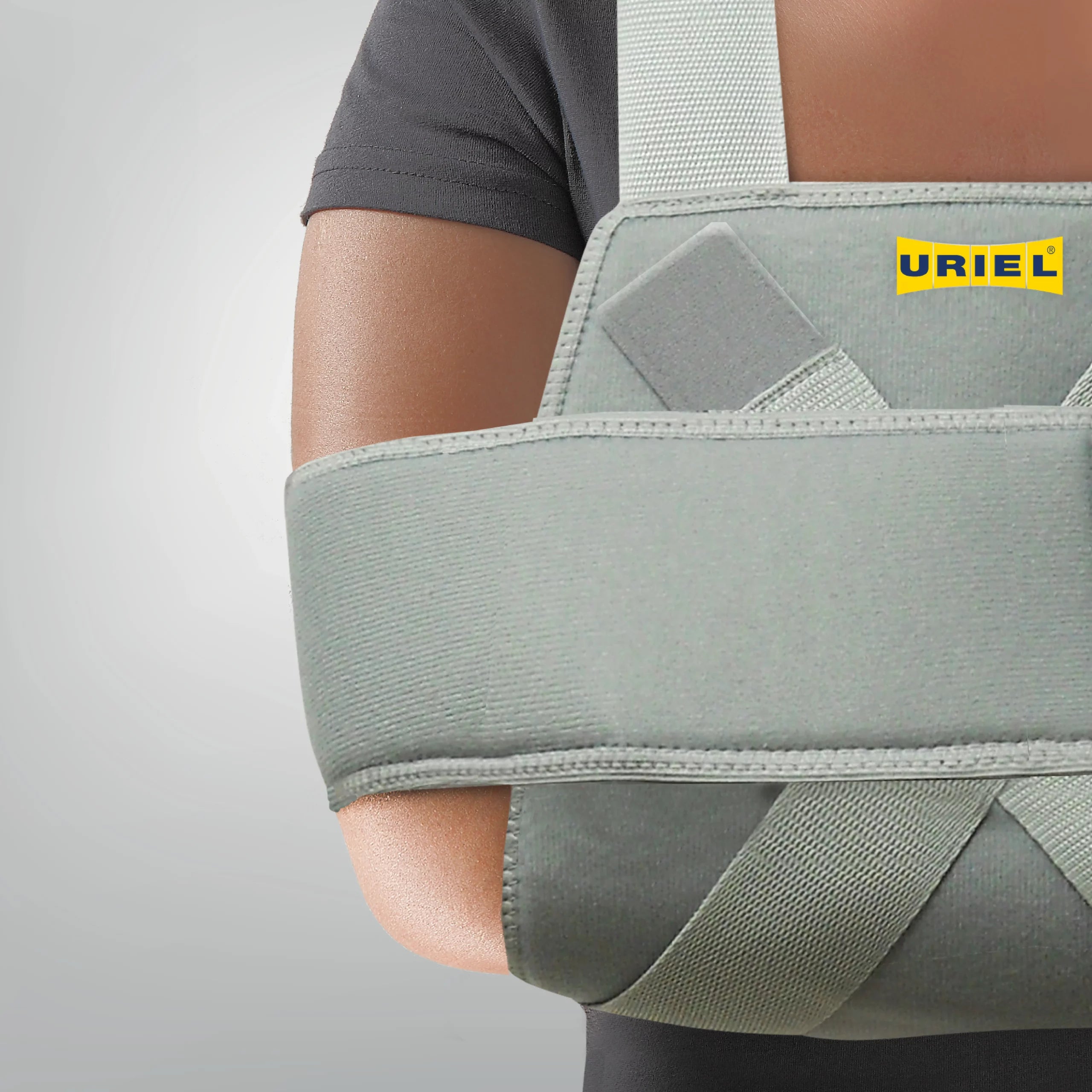
Shoulder fixation belt | 84
Shoulder fixation belt
A strong, padded holster that prevents shoulder and arm movement using an adjustable strap system with Velcro, made of sweat-absorbent material for maximum comfort, and an additional fabric strap to secure the forearm.
Medical indications:
Shoulder immobilization after unloading
Fracture or surgery

Dimensions

Extended description
Planning and design:
The shoulder fixation belt is designed to allow optimal fixation of the shoulder and arm, while preventing pressure on the neck.
Pain reduction:
The shoulder immobilization belt keeps the humerus at a safe angle that prevents the joint from dislocating again. The belt relieves shoulder pain.
Rehabilitation and recovery:
The product's function is to immobilize the shoulder and arm joint in a position that prevents the condition from worsening until partial recovery allows for more movement. Immobilization for the correct period of time allows the injured joint to heal optimally.
User manual
- Before purchasing the product, measure your chest circumference and choose the right size for you according to the size chart.
- The product should be worn with the help of another person.
- Insert your forearm into the sleeve. If the insertion movement is painful, you can try doing it while leaning your body forward.
- The two straps coming out of the sleeve extend up through the chest to both shoulders, cross behind the back, return to the sleeve from below and fasten it to the chest.
- Then, wrap the transverse strap around the arm and chest, above the level of the forearm, as can be seen in the picture.
- Use of the product is subject to the recommendation of a doctor or physiotherapist.
- Consult your therapist regarding duration of use.
Our expert advice
- Fixation using this product allows for high-level functioning because the product provides stability to the shoulder joint, allowing you to function safely in daily activities and while sleeping without endangering the shoulder.
- It is recommended to sleep well during the rehabilitation period.
- Shoulder pain often involves waking up from nighttime pain. It is important to know that this pain is usually not due to "poor posture," but rather due to the acute process in which the shoulder is located, along with the lack of movement of the joint during sleep. Therefore, if you have woken up with pain, you should perform gentle, repetitive movements in directions that are not painful. Within a few minutes, the pain will subside and you can go back to sleep.
- Measure your range of motion occasionally, without the shoulder strap, to see if there is any progress in the condition: Stand in front of a wall, touch your fingers to the wall and use them to climb as high as possible. Mark how far you have reached and try to improve it the next day.
- The rehabilitation process is full of ups and downs.
- If there are no contraindications, it is recommended to perform certain exercises that may improve joint function in terms of strength, range of motion, and quality of movement.
- Here are some recommended exercises:
- Isometric rotation exercises
- Pendulum exercises
- Strengthening the scapula muscles
- Exercises to improve range of motion (on a wall)
- Do strengthening exercises for your legs, they are not to blame for your shoulder hurting now.
It is recommended to combine aerobic training.

Planning and design:
The shoulder fixation belt is designed to allow optimal fixation of the shoulder and arm, while preventing pressure on the neck.
Pain reduction:
The shoulder immobilization belt keeps the humerus at a safe angle that prevents the joint from dislocating again. The belt relieves shoulder pain.
Rehabilitation and recovery:
The product's function is to immobilize the shoulder and arm joint in a position that prevents the condition from worsening until partial recovery allows for more movement. Immobilization for the correct period of time allows the injured joint to heal optimally.
- Before purchasing the product, measure your chest circumference and choose the right size for you according to the size chart.
- The product should be worn with the help of another person.
- Insert your forearm into the sleeve. If the insertion movement is painful, you can try doing it while leaning your body forward.
- The two straps coming out of the sleeve extend up through the chest to both shoulders, cross behind the back, return to the sleeve from below and fasten it to the chest.
- Then, wrap the transverse strap around the arm and chest, above the level of the forearm, as can be seen in the picture.
- Use of the product is subject to the recommendation of a doctor or physiotherapist.
- Consult your therapist regarding duration of use.
- Fixation using this product allows for high-level functioning because the product provides stability to the shoulder joint, allowing you to function safely in daily activities and while sleeping without endangering the shoulder.
- It is recommended to sleep well during the rehabilitation period.
- Shoulder pain often involves waking up from nighttime pain. It is important to know that this pain is usually not due to "poor posture," but rather due to the acute process in which the shoulder is located, along with the lack of movement of the joint during sleep. Therefore, if you have woken up with pain, you should perform gentle, repetitive movements in directions that are not painful. Within a few minutes, the pain will subside and you can go back to sleep.
- Measure your range of motion occasionally, without the shoulder strap, to see if there is any progress in the condition: Stand in front of a wall, touch your fingers to the wall and use them to climb as high as possible. Mark how far you have reached and try to improve it the next day.
- The rehabilitation process is full of ups and downs.
- If there are no contraindications, it is recommended to perform certain exercises that may improve joint function in terms of strength, range of motion, and quality of movement.
- Here are some recommended exercises:
- Isometric rotation exercises
- Pendulum exercises
- Strengthening the scapula muscles
- Exercises to improve range of motion (on a wall)
- Do strengthening exercises for your legs, they are not to blame for your shoulder hurting now.
It is recommended to combine aerobic training.
Blog
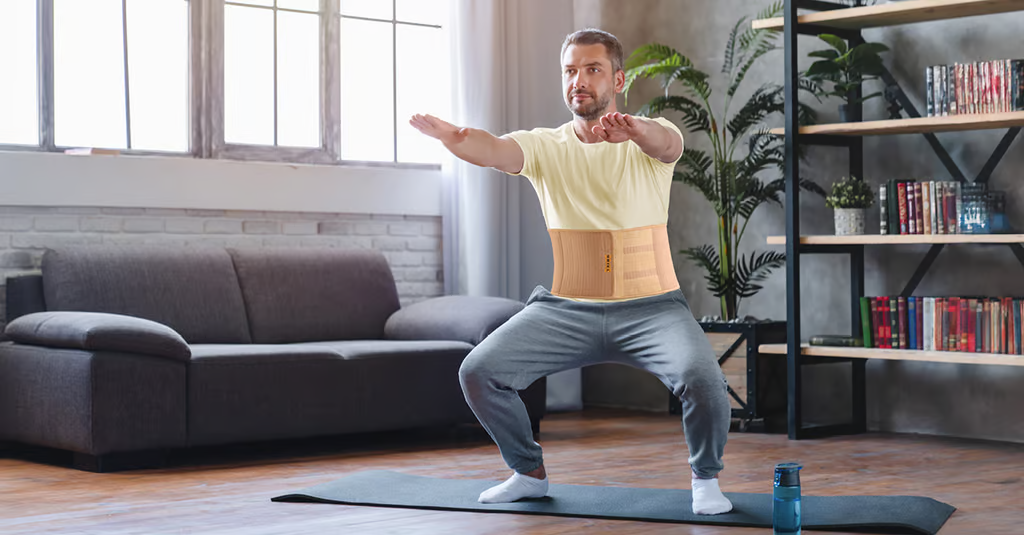
Treating Lower Back Pain: 6 Tips to Improve Quality of Life
Suffering from lower back pain? You are definitely not alone. There are many ways to deal with one of the most common pains in the world, here are some of them. It's time to relieve the pain.
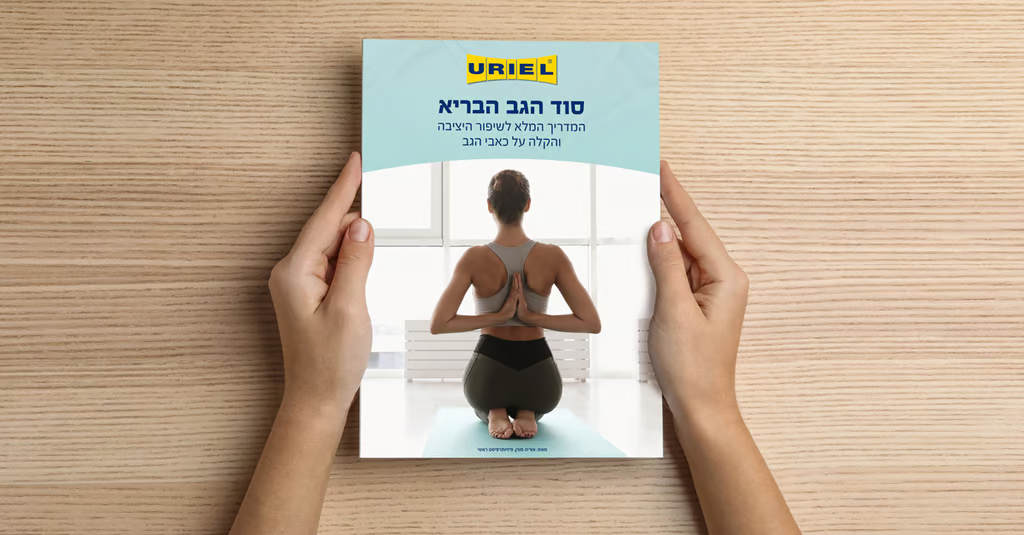
The Secret to a Healthy Back: The Complete Guide to Improving Posture and Alleviating Back Pain
Is back health important to you? Get the 'Secret of a Healthy Back' guide containing information, tips and useful advice for relieving back pain. By Oriya Moran, Chief Physiotherapist Download t...

Kinesio tape or professional elastic bandage?
Suffering from sports injuries, bruises or simply pain caused by medical problems? Get to know the variety of dressing products that will support you. When should we use kinesiology tape and why d...
